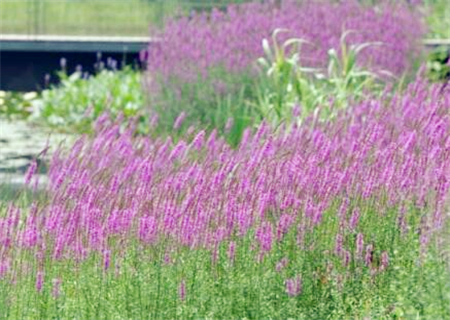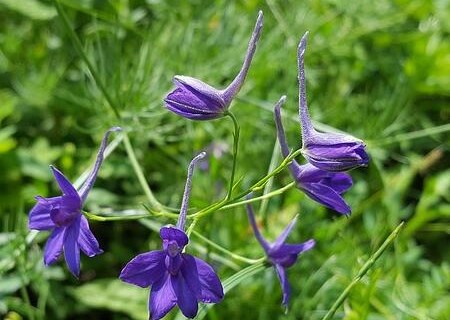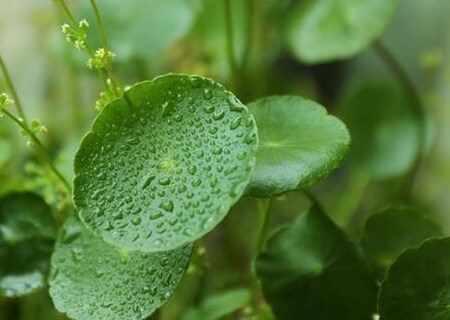When will the flowers bloom? When is a good time to sow? With planting methods
Qianqu is born on the banks of rivers, lakes, streams and ditches, and wet grasslands. Like strong light, strong cold resistance, like water and humidity, do not have strict requirements on the soil, and grow better on deep, humus-rich soil. So when will it blossom? When should I sow the seeds? Now, the planting methods for you are as follows:

When does Chiku blossom
The flowers of Chichu are aggregated, the pedicels are relatively short, and the small flowers gather together, which looks like a big spike. The color of flowers is mainly reddish purple or lavender, very gorgeous.
Qianchi is a kind of flower that blossoms for a long time. It usually blossoms from July to September. It can be watched for 2 or 3 months, giving people a beautiful visual enjoyment.
When will Qianqu be sown?
Seed propagation: spring sowing in March-April, before sowing, the seeds will be mixed with fine soil, then sowed on the bed, covered with soil 25px, and finally covered with grass and watered. The seedlings emerged 10-15 days after sowing, and the grass was uncovered immediately. Seedling height 250px was transplanted around. 3 plants were planted in each hole according to the distance between rows and 750px500px.
Cuttage propagation: strong branches were selected in spring, cut into about 300px length, leaves were removed, and the depth of oblique sowing into the soil was cuttings 1 to 2, pressed, watered and transplanting after rooting and long leaves. Ramet propagation: dig up the root clump from April to May in spring, cut the bud into a clump, and plant it in the wetland where sufficient base fertilizer is applied.
How to grow Chiku
Main points of cultivation:
(1) lax requirements for soil, cold resistance, light and moisture. Fertile soil is the best cultivation.
(2) it can be propagated by sowing, cutting, ramet and so on. Sowing must be carried out in wetlands; cuttings are carried out from June to July, the new branches are cut off and inserted into muddy water, and they can take root in a month; ramet in spring, the old plants are dug up, cut into multiple parts, and planted separately.
(3) it can be cultivated once and harvested for many years.
Field management: ploughing and weeding 3-4 times a year from planting to closing. One application of nitrogen fertilizer or compound fertilizer in spring and summer, and one compost or stable manure after autumn to keep the soil moist is the most important measure to grow Chikuchi.
The efficacy and function of Qianqu
The whole herb is used in medicine to treat enteritis, dysentery and hematochezia; it is used externally for traumatic bleeding.
[performance] bitter, cold. Return to the large intestine meridian. Clear heat, cool blood, restrain, stop diarrhea.
Treatment of dysentery, metrorrhagia, hematemesis, traumatic bleeding, ulcers and ulcers, etc.
① treats diarrhea, dysentery, stool blood, blood avalanche. Fried clothes: 6 to 12 grams.
External application of ② in the treatment of traumatic bleeding. This product contains many kinds of alkaloids, such as chelerythrin, Gallic acid tannin and choline, light chelidine, light chelidine and so on. Flowers also contain vitexin and so on. The decoction can inhibit staphylococci and typhoid bacilli in vitro, especially to Shigella dysenteriae. It has antispasmodic effect on isolated intestinal canal. Root decoction is used as an astringent or palliative for chronic dysentery.
According to traditional Chinese medicine, the whole herb tastes bitter and cold. It has the functions of clearing heat, cooling blood and so on. It can treat dysentery, ulcer, blood avalanche and other diseases. It has antibacterial and other functions.
Animal experiments have proved that Qianqu has a hypoglycemic effect. The extract can also reduce the content of serum TG and increase the level of FFA.
Time: 2019-03-18 Click:
- Prev

What are the seed planting methods of perennial herbaceous plant delphinium? What is the medicinal value? How long is the florescence?
Any of various perennial herbs of the genus Swift. Because of its unique flower shape, it is very similar to a swallow. Originated in southern Europe, it is cultivated in all provinces of China and is deeply loved by people. So do you know what are the methods of planting delphinium seeds? What is the medicinal value? How long is the florescence?
- Next

What are the seed planting methods of Coptis chinensis (also known as Chinese coriander)? What is the effect and effect? And money.
Tongqian grass, also known as Chinese coriander, the whole grass into medicine, there are analgesia, heat, dampness, treatment of abdominal pain, adverse urination, eczema and other diseases. The nature likes to be warm and humid, and the cultivated soil with good soft drainage is better, or it can be hydroponically cultivated. So do you know what are the seed planting methods of Rabdosia angustifolia? What is the effect and effect?
Related
- Fuxing push coffee new agricultural production and marketing class: lack of small-scale processing plants
- Jujube rice field leisure farm deep ploughing Yilan for five years to create a space for organic food and play
- Nongyu Farm-A trial of organic papaya for brave women with advanced technology
- Four points for attention in the prevention and control of diseases and insect pests of edible fungi
- How to add nutrient solution to Edible Fungi
- Is there any good way to control edible fungus mites?
- Open Inoculation Technology of Edible Fungi
- Is there any clever way to use fertilizer for edible fungus in winter?
- What agents are used to kill the pathogens of edible fungi in the mushroom shed?
- Rapid drying of Edible Fungi

